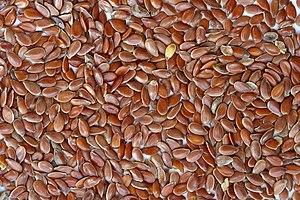We are continuing through your 2-week step-by-step guide to starting your own sustainable garden.
We are about get down to the nitty-gritty, and start planting…. But there’s one more thing I forgot — first we have to choose our seeds! Here are some tips to help with the process.
 Image via WikipediaChoosing Healthy Seeds
Image via WikipediaChoosing Healthy SeedsChoosing viable seeds can sometimes prove tricky. A seed may appear just fine to the eye, and yet not have within it the strength and vitality to produce a healthy plant.
If you save seed from your own plants you are able to choose the best yourself. So how do you figure out which seeds to preserve? When looking at growing plants for seed, it is not the blossom only which you must consider, but the entire plant. Why? Because a weak, scrawny plant may produce one fine blossom. Looking at that one beautiful blossom, you may think ahead to the numberless equally lovely plants you are going to have from the seeds. But just as likely as not the seeds will produce plants like the parent plant.
So in seed selection the entire plant should be considered. Is it sturdy, strong, well shaped and symmetrical? Does it have a goodly number of fine blossoms (or fruits)? These are questions to ask in seed selection. (I learned this the hard way last year, when I saved seeds from some gorgeous morning glories blossoms, which were growing on a straggly, weak-looking plant. My new seedlings this year are also turning out straggly & weak so far…. Hopefully they’ll perk up soon!)
Size is also another point to hold in mind. If you purchase seeds, you have no way of knowing anything about the plants from which these seeds came — all you have to judge from are the seeds themselves. If sizes vary, by all means choose the largest and fullest seed.
The reason for this is that a new plant must depend for its early growth on the nourishment stored up in the seed. And so if we choose a large seed, we have chosen a greater amount of food for the young seedling. The seedling feeds upon this stored food until its roots are ready to do their work. So if the seed is small and thin, and the first food supply insufficient, there is a possibility of losing the little plant.
The third thing to look out for in seed is viability. Some seeds which look to be
 Image via Wikipedia all right may not develop at all, for various reasons. Seeds may have been picked before they were ripe or mature; they may have been frozen; and they may be too old. Seeds retain their viability or germ development power for a given number of years and are then useless. There is a viability limit in years which differs for different types of seeds.
Image via Wikipedia all right may not develop at all, for various reasons. Seeds may have been picked before they were ripe or mature; they may have been frozen; and they may be too old. Seeds retain their viability or germ development power for a given number of years and are then useless. There is a viability limit in years which differs for different types of seeds.If buying seeds, check the packets for expiration dates. If you are saving your own seed, in most cases it will be best to throw out unused seed after 2-3 years, and always be sure to stash your seeds in a cool, dry place!
Okay, ready to plant? Good! In our next lesson, we will get down to planting, so hopefully you’ve got your tools ready! (If you need help finding good garden tools, there are some suggestions here: http://www.newholisticliving.com/sustainablegardening.html )
Rose.

No comments:
Post a Comment